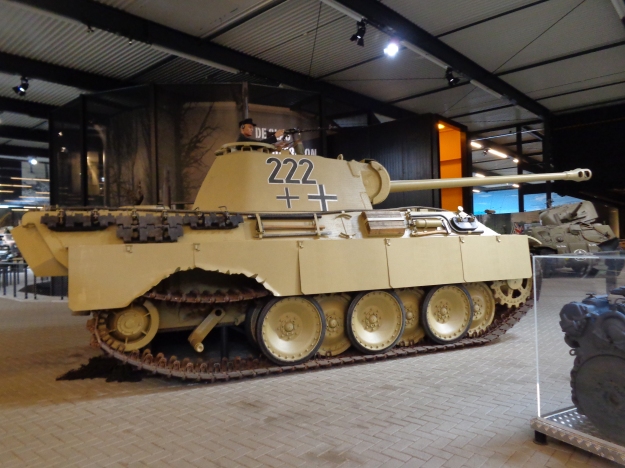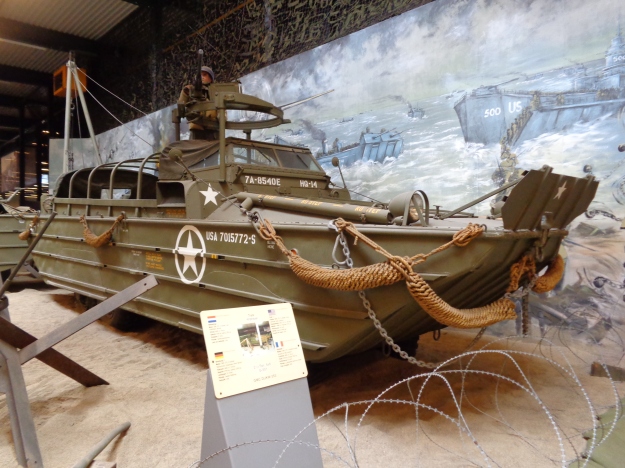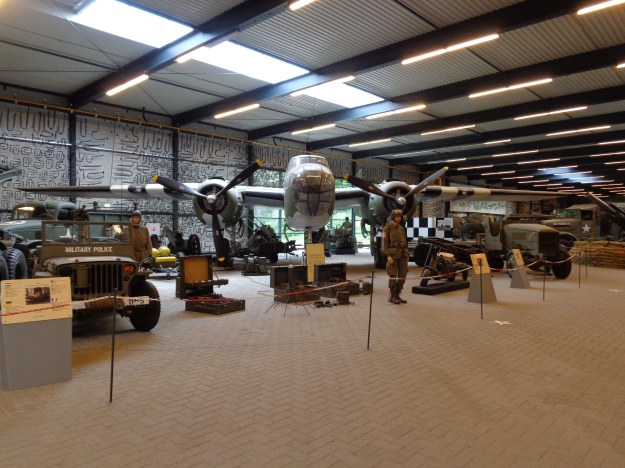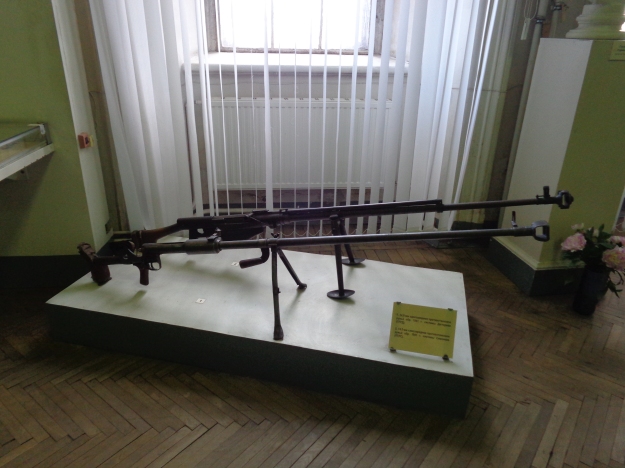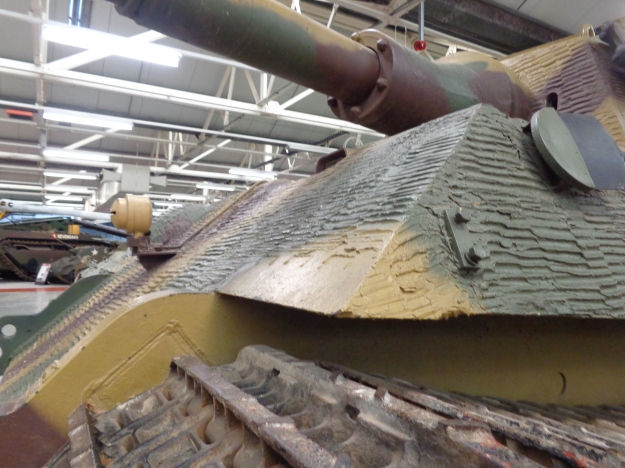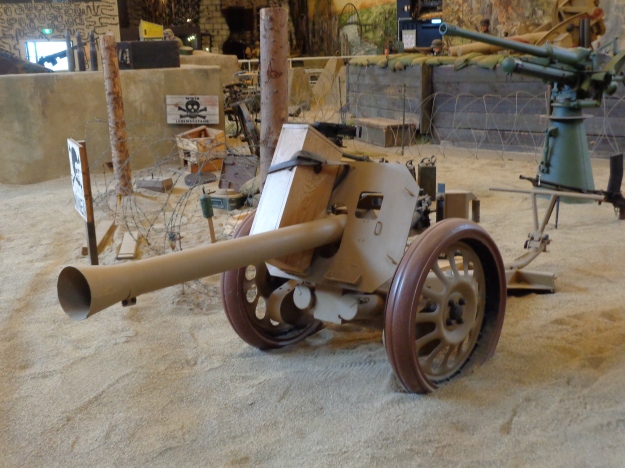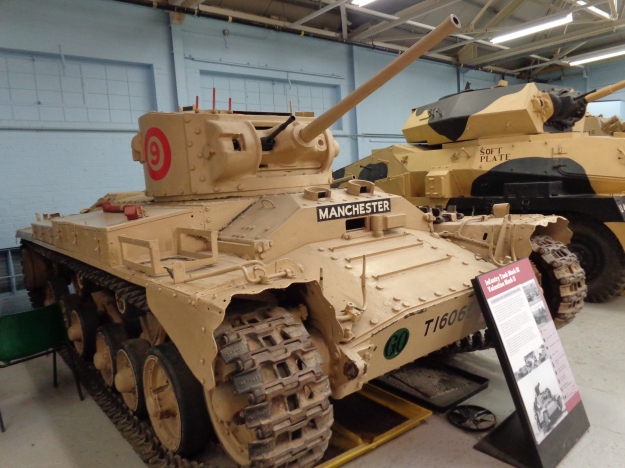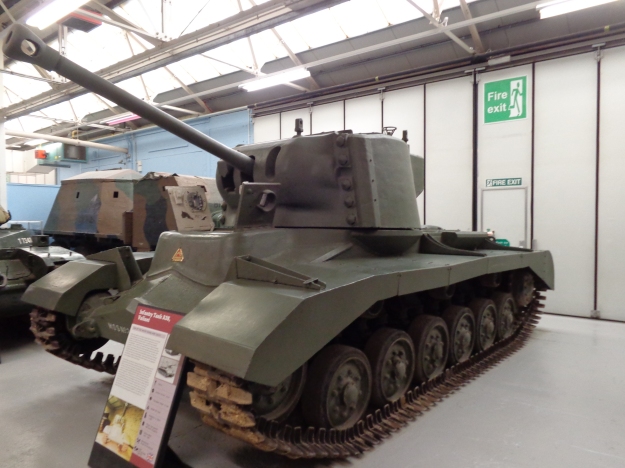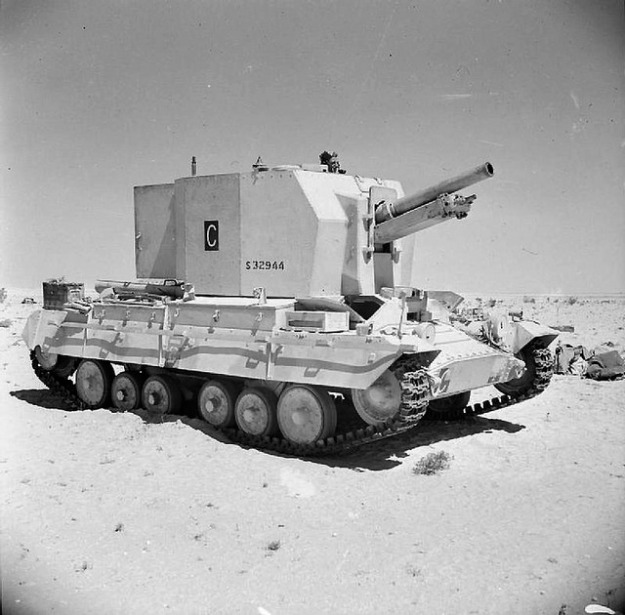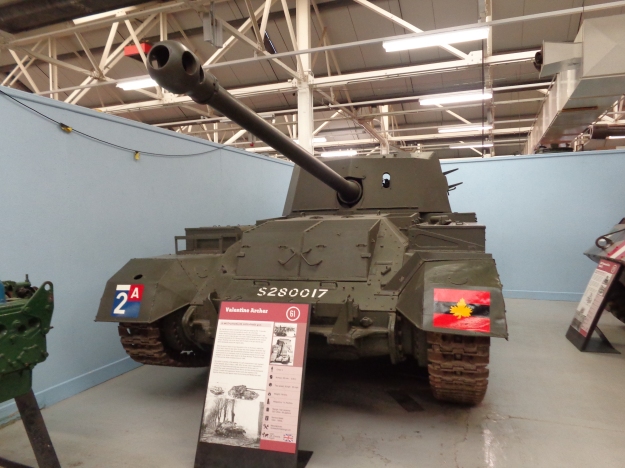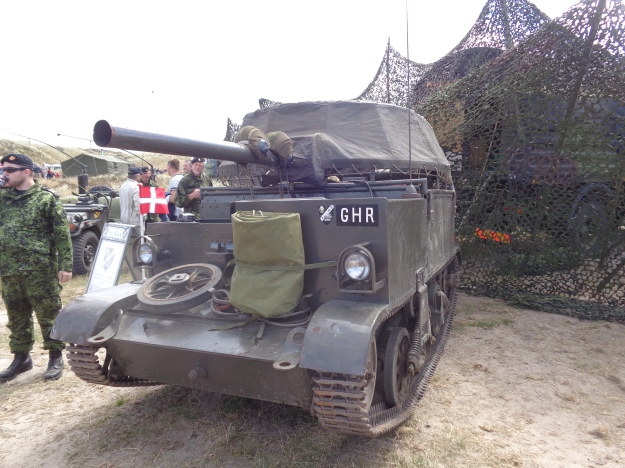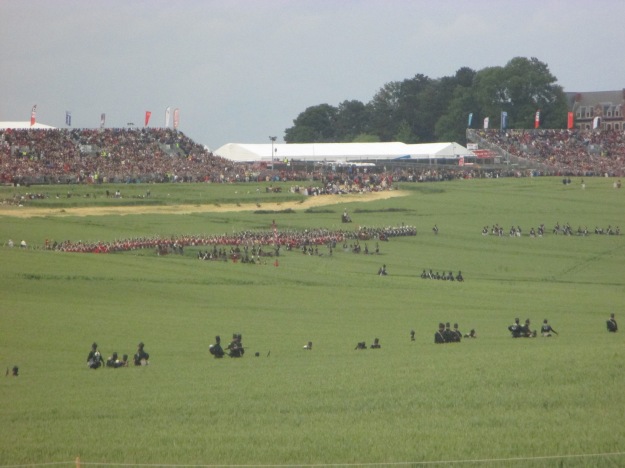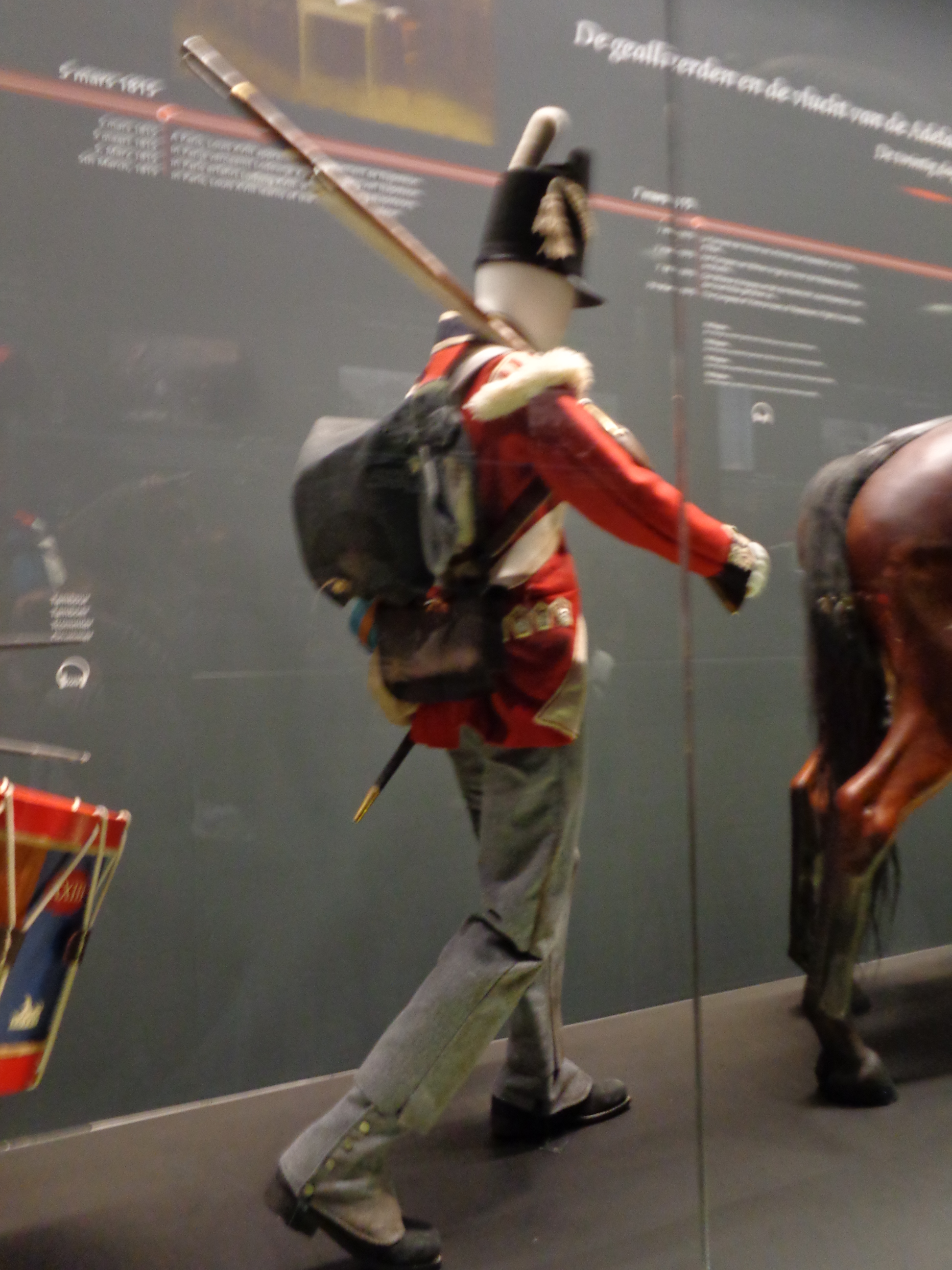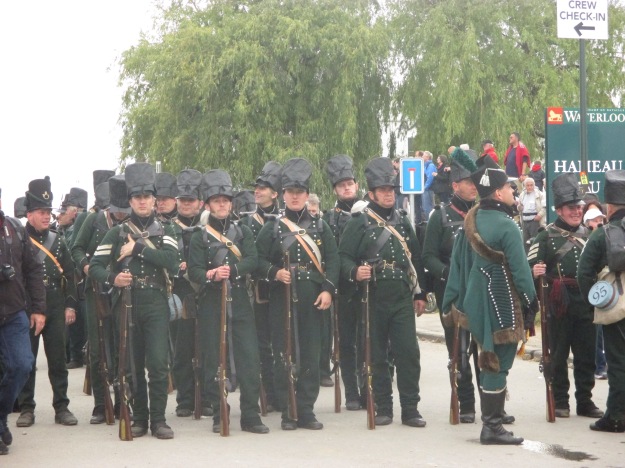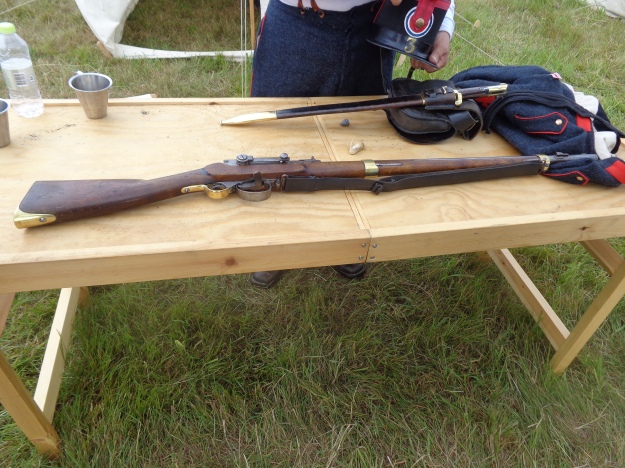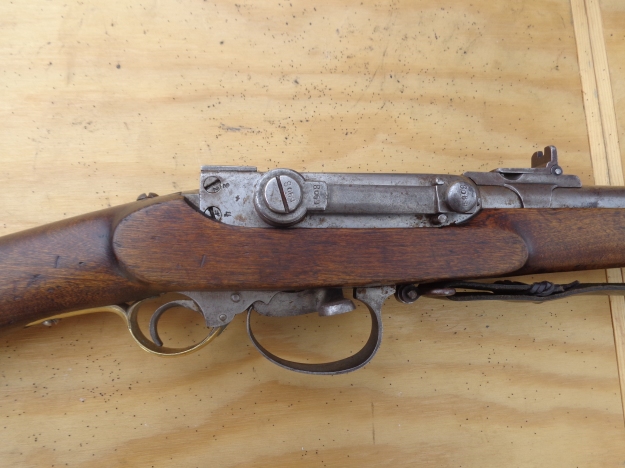On April 22 I am going to host a Flames of War tournament. The format will be Red vs. Blue 1515 points late war. I will probably post more on that at a later stage. But as part of the preparation, I have committed myself to play 1 game per week on average and do more tactical posts on the blog.
So next in the journey, infantry support weapons. Infantry support weapons are important weapons because these allow the infantry to perform a number of tasks. Support weapons add to offensive and defensive capabilities.
In this post I will cover regimental and lower echelon attached and organic weapons; machine guns and mortars, as well as the infantry gun. I will discuss the roles of the weapons both from a historical and Flames of War perspective. I will try to cover use of weapons rather than organization.
Antitank weapons such as anti-tank guns and shoulder-fired AT weapons will be covered in a later post.
Origins of the Infantry Support Weapons
Many of the weapons have their origins in WWI, as machine guns drove the infantry to ground and created a No Man’s Land. The infantry had therefore need of specialized weapons who could follow them out into the death zone and help them shot their way forward. For this light machine guns were developed to be carried forward by one or two men. These would provide a lot of mobile firepower could help the infantry suppress enemy positions. often the infantry was held up by enemy heavy machine guns emplaced behind log or concrete positions. Heavy machine guns would be used for creating beaten (or death) zones. There would also be advanced fire plans with covered sectors and often including indirect fire with machine guns being fired up in the air in an angle. Where resistance was too tough the mortars or infantry guns could be brought forward and smash them with high explosives. If counter attacked by enemy tanks, anti-tank rifles or infantry guns could be brought in play.
Machine Guns
There are several classes of machine guns and several ways of classify them. As each country have their own ways of classification, I would like to divide them into 3 types: light, medium and heavy (please note that this my interpretation and not following any official standards). The light machine gun is a man portable machine gun, it is light enough to be brought forward by one man (and while several men may be needed to carry extra ammo, it is effectively operated by one man). These machine guns were often incorporated into infantry platoons. In the beginning of the war a typical infantry squad would consist of two teams, a fire and assault/manoeuver team. The idea was to use the fire team with the machine gun to provide a base of fire while the assault team would move on the enemy. These machine guns would typically be the British Bren gun, German MG34/42 (with a bipod configuration) and Soviet DP-27. In the US army an infantry squad carried either a M1919 light machine gun of this class although the standard rifle platoon more often used the BAR (Browning Automatic Rifle) supplemented by the fast firing semi-automatic M1 Garand infantry rifle. The machine guns are used predominately for suppressive fire when closing with the enemy.
The Medium Machine Gun is a crew served weapon, it is often a heavier weapon which can be broken down in parts and served by 2-3 men plus extra to carry spares. It is often mounted on a tripod to sustained fire from a stable position. It is used to create beaten zones. Often these are water-cooled or have advanced barrel change mechanisms to avoid overheating during sustained fired. British types were often Vickers (MMG), the Germans used the MG42 but with a tripod, Soviets the Maxim M1910 and the US M1917.
The heavy machine guns are similar to MMGs but are often of higher caliber and can be used in a more anti-material role. The US .50 cal machine guns and the Soviet DSHK were for instance used in a anti-aircraft role and could be used against lighter armoured vehicles.
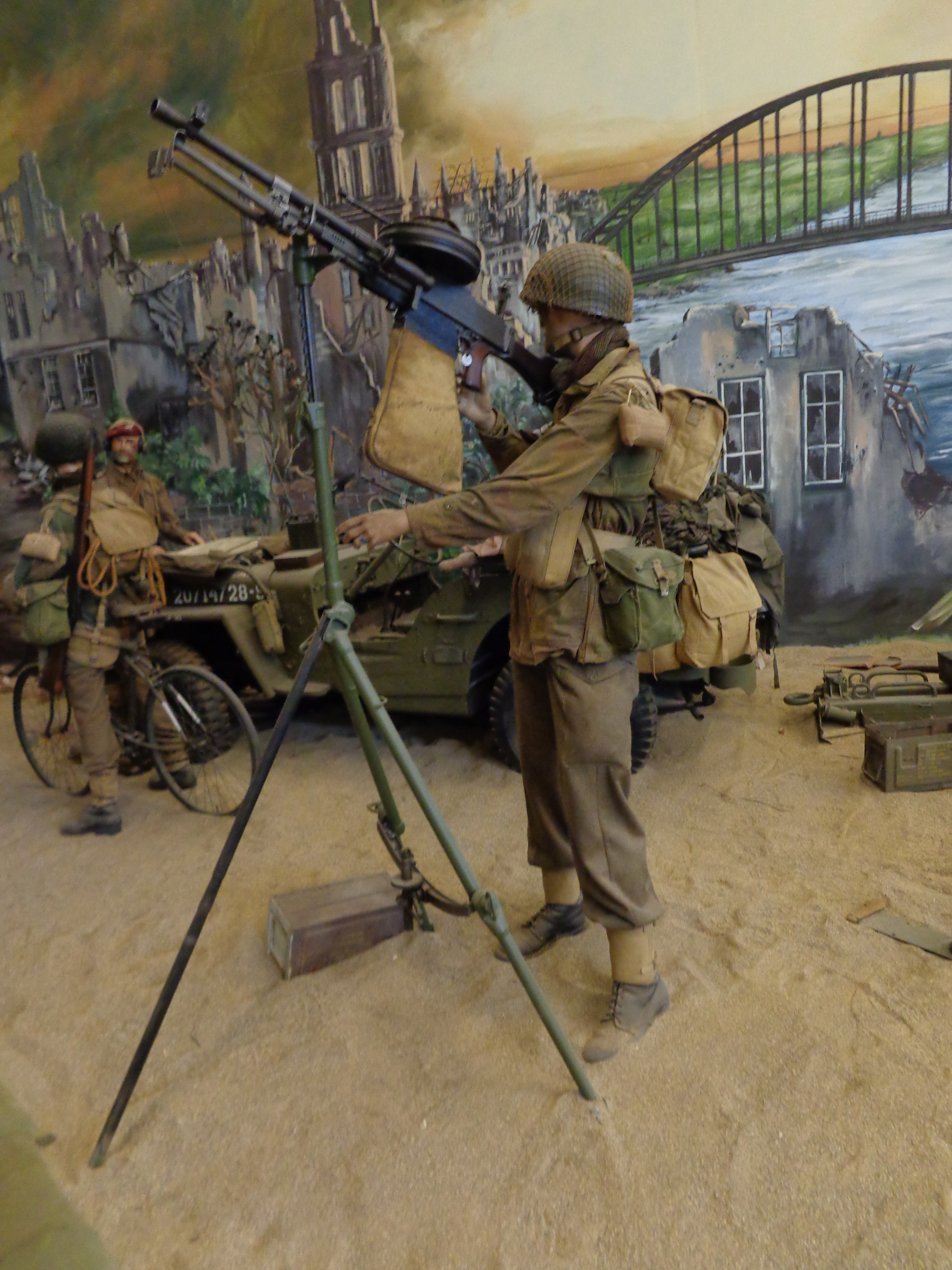
Example of AA mount
Mortars
The pocket artillery of the infantry man, the humble yet readily available mortar. The mortar is much cheaper to produce and require fewer men operate than the artillery, it is lighter and thus can more easily keep up with front line units however it also have more limited range. When dislodging an enemy from an entrenched position is difficult, it will often require weapons that can suppress him before soldiers can move on the position. Smoke can be dropped to create concealment as the troops come forward and HE and WP rounds can pin him to his fox holes. Illumination at night and chemical rounds are also something the mortar excel in.
The mortar has often been a bit of a under-rated weapon, because of its ability to be stationed near the front line and being much more easy to operate, it was easier to fire at specific targets of opportunity and towards the end of the war almost 70% of casualties in the British army in NW Europe 1944/45 is estimated to be from mortar and rocket (nebelwerfer) artillery (with mortars making up the larger percentage of weapons, it is likely it also made up the larger part of casualties). One of the advantages of the mortar is is ability to be laid fast on the target, in a time where field radios were bulky or unreliable and forward observers still could be found laying telephone wire when moving forward, the ability to respond fast was truly appreciated with the mortar.
There are three classes of mortars which are associated with the caliber of the mortar.
The light mortar is developed in the interwar period to replace the rifle grenades, the emphasis was a light weapon that could come forward with the infantry and destroy machine guns or other specific targets holding up the infantry. The firing therefore had to be done with “direct” observation from the crew. The typical caliber was around 50 mm in order to pack enough explosives yet being light. It was however found that the 50/60 mm rounds were too light for pill boxes and the light mortar was phased out in many cases.
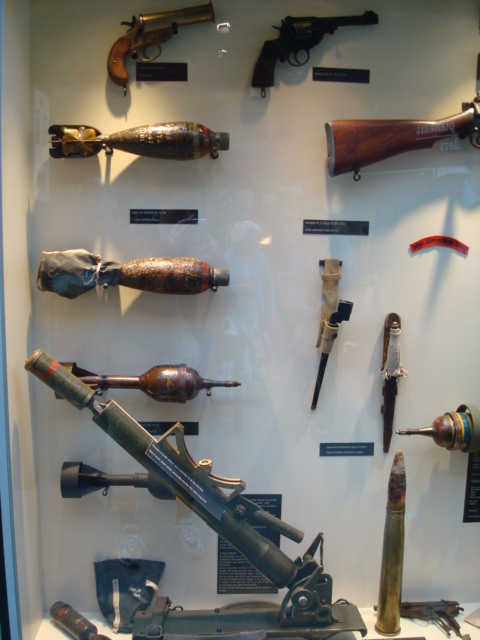
Light mortar 2″. Light enough to be carried forward with rifle platoons
The typical medium mortar is around 80-82 mm and of the Brandt design which meant that in many cases ammo was actually interchangeable between various national armies. These were often equipped with HE, smoke and white phosphorous rounds and could often also fire HE rounds as air bursts to shower enemy troops in fragments or branches (if hiding in a wood). Very few mortar rounds had impact fuzes to allow penetrations of overhead cover so more often elimination would be achieved by collapsing the sides in on light constructed defences. With more solid defences several hits would be required which was hard to achieve giving to the relative inaccuracy of the weapon. It is easy to view mortars as light artillery but actually do to the relative less force applied compared to artillery shells, mortar shells often has higher explosive blast as thinner walls are needed, this makes them excel a lot more in an anti-infantry role but less so in a role where penetration is required. The same goes for the trajectory where mortar rounds fall in a much steeper angle.
Heavy mortars are mortars above 82 mm and this category contains the 120 mm mortars used by Germans and Soviets and the 4.2″ mortar used to British and US forces. Especially for the 4.2″ mortar the initial thought was that the mortar would be used for chemical warfare similarly to WWI mortars. Gas warfare was however never used in WWII and instead the mortars were used to deliver heavier HE shells.
Even larger mortars such as the Soviet 160 mm were developed but these are outside the scope of this text.
Infantry Guns
Infantry guns have their origins in WWI where the need for accompanying artillery was necessitated by poor communications. The idea was a gun that could be used much like a mortar but also had a direct fire capability and better range. It could also be used in an anti-tank role although past the early days of WWII this was less likely. Reviews of the weapon performance after WWI found the infantry gun too cumbersome to be moved fast still and the British dropped the concept. The Soviets and Germans doctrines stressed the use of direct fire for hard points and pill boxes. They developed 76mm and 75 mm cannons respectively for direct firing while also allowing them to fire shells similar to the power of mortars. When the 75 mm shell was found too light, the Germans developed a 150 mm infantry gun. The US regimental cannon company is a bit of an oddity as it’s purpose was to furnish infantry regiments with their own integral artillery. Originally issued with 75 mm pack howitzers these were later replaced with a short 105 mm howitzer. These operated more like artillery than the German use of infantry guns.
Gun Teams in Flames of War
A couple of general comments on gun teams. As Flames of War definitely is not supposed to be a simulation game and thus does have a couple of mechanisms that are up for interpretation. Gone to ground improves gun team saves to 3+ from 5+, which I have found a bit puzzling but my interpretation of this is that when the gun is in action (hence not gon
e to ground) the crew in order to serve the team effectively have to come close together and work, that means that HE shells have a higher chance on knocking out a sufficient number of men to make the weapon inoperable even if the weapon itself is not destroyed. Also serving a weapon would probably also mean that a trooper could not stay as low to the ground as he would like. Where as when the gun is not in action i.e. gone to ground my interpretation is that the crew likely disperse close to the gun and use the terrain like small depressions for cover which significantly improve chances that no or only a few guys would be injured and killed by fire but probably would have enough men to serve the weapon. I believe the same goes for infantry saves, for me the infantry save does not mean whether the plastic soldiers were hit or not. After rolling to hit, any hits I at least interpret as rounds/shells landing close enough to cause damage, so the 3+ save is whether the team is operable or not after the shell has exploded. It could perhaps be one guy wounded or killed but the rest of the team is still combat effective. Perhaps it could even be interpreted as superficial injuries but to me a hit is actually a hit as in something that would cause damage, otherwise the game would be inconsistent. If a tank is hit in the game it always takes an armour save as if something hit the armour (but may bounce off), I would like to think the same for infantry/guns.
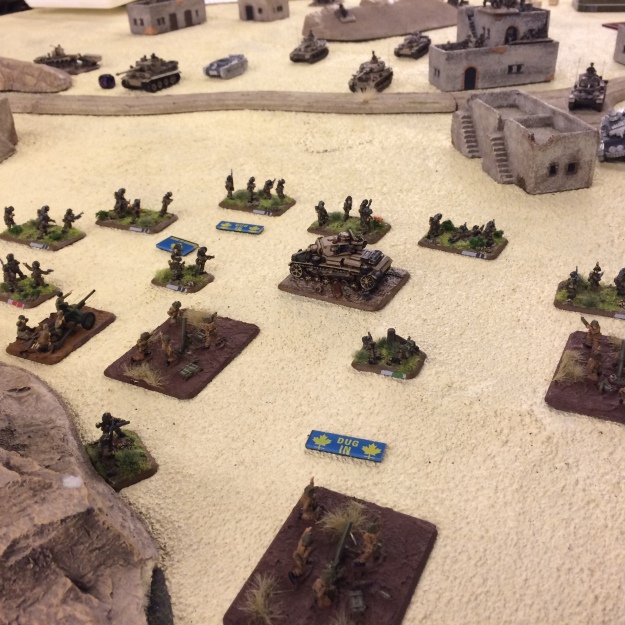
The infantry support weapons: Mortars, LMGs and AT guns prepare to hold off the advancing German armour
Machine guns in Flames of War
The light machine guns are incorporated in the infantry platoon as the MG team or in case of it having been diluted with too many rifle teams as the Rifle/MG team. The rifle/mg team represent the traditional fire and maneuver teams, one team with the MG the other with the rifles or smgs but because Flames of War does not have the scale to represent squad combat, I believe it was simplified to 2 rifle/mg teams rather than a rifle and an MG team. Rifle/MG teams are pretty much the standard infantry team late in the war and has ROF 2 (the average of 1 for rifle team and 3 for MG team). A lot of nations experimented with motorizing infantry and the additional transportation allowed squads to be fitted with more fire-power as it was more easy to carry extra ammo etc. In Flames of war some motorized units especially the Germans can take MG teams. These teams represent every team having access to a machine gun and allow for an astonishing ROF 3 and ROF 2 when pinned down. The US infantry in this regards is special as they are rifle teams being equipped with rifles (semiautomatic) and an automatic rifle in the BAR. This left the individual with more firepower than other nations but the squad with less. In the game this combination rates the US infantry as rifle teams (dropped ROF to 1) but the special rule automatic rifles allow the teams to move more aggressively than other rifle teams in that they do not suffer the moving with ROF 1 penalty making them effectively equal to rifle/mg teams on the move and only slightly worse in defense.
Defensive Fire vs Trained targets
|
ROF |
To hit |
W/ reroll |
Hits/team |
| Rifle |
1 |
66,00% |
|
0,66 |
| Rifle/MG |
2 |
66,00% |
|
1,32 |
| MG |
3 |
66,00% |
|
1,98 |
| Rifle (US) |
1 |
66,00% |
88,44% |
0,88 |
My experiences, I find that MG armed platoons (apart from the much smaller British Motor Rifle) are very capable on defense. I rarely find myself tempted to combat medium machine guns to the mix as their defensive fire even when pinned down is formidable. Rifle/MG teams I have much more trouble with, often they can bring the necessary ROF to create enough volume to pin attacker.
The Medium Machine Guns in Flames of War are typically covered by two types of teams, the LMG (ROF 5) and HMG (ROF 6) but are otherwise very identical. These are man-packed gun teams with a longer range 24″ to the 16″ of the infantry machine gun. To me that represent the more stable tripod which allows the team a more steady platform for long range fire. Apart from the US forces M1919 LMGs are fairly rare in Flames of War.
Many of the sophisticated machine gun indirect fire techniques developed in WWI deteriorated during WWII. The main reason for this was the abundance of support weapons that would be used in the same role such as mortars and artillery. Only British MMG platoons get the option to perform indirect fire. I must admit I rarely use the special rule. If my opponent is dug it the FP rating of -, does not allow me to destroy his teams and I can only hope to suppress him. While this is exactly the role of the machine gun in the indirect fire role, I often find, much like the WWII company commanders, I can allocate mortars and 25 pdrs to shell them instead. Often the 25 pdrs are already ranged in anyway as that would likely be my main point of attack that needs to be suppressed. Against infantry in the open where a template bombardment could be tempting, I find that 4 HMGs firing at ROF6 will do more damage. With trained machine guns vs the typical 7 team veteran grenadier platoon at long range and in cover, even if ranging in on first attempt the average number of hits would be 3.5 from bombardments, with 4×6 shots at 16% chance to hit is still 3.8 hits from direct fire. So it should be used only for infantry moving behind enemy lines out of range or where pinning is desperately needed to prevent them from moving in which case the chance of pinning is 70%.
British machine guns cannot be combat attached to combat platoons but I would like to take some time to consider them. Soviet companies (i.e. platoons) can have an integral HMG, this is actually owing to the Soviet infantry in theory having more organic support weapons with their infantry regiments than other nations but admittingly Soviet forces were seldom up to full established strength. I find that my Soviet platoons should often move forward and get stuck in close combat where their larger number of teams can make the difference and thus I seldom buy HMGs. In defence I rely on mortars and artillery to whittle down my opponent and then counter attacking with my infantry so HMGs simply reveal my infantry and expose them to counter fire which takes away the strength in numbers when I finally counter attack. With my Germans I most often play panzergrenadiers which is MG teams in their combat platoons, hence I do not find the extra ROF provided by HMGs really needed. For the US I have no experience but I do believe owing to regular infantry being rifle teams I would like to get the weapons platoon and attach some LMGs out while keeping the mortars in the platoon together.
An interesting historical side note which is also reflected in the game is the US practice of dismounting machine guns from vehicles and form provisional HMG platoons staffed by spare personnel from HQ or A&P platoons. This too can be done in Flames of War although I rarely see US armoured rifle platoons as these are not as interesting as their German counterparts, and US rifle platoons with transports I have yet to face.
Mortars in Flames of War
Mortars in Flames of War receive a reroll on the first range in attempt to emulate the ease of deploying and direct observation. I tend to view heavy mortars as poor man’s artillery, except for US and British heavy mortars, heavy mortars do not get the smoke special rule and also lack the ability to perform direct fire, they are therefore limited to firing bombardments with shorter range which also makes them very cheap in terms of point costs which somewhat makes up for their lack of staff teams. Firepower is keeping in the notion that these are good any infantry weapons and is typically 3+ or 4+. In the other end of the spectrum is the light mortar, this is often directly integrated into rifle platoons and lack the bombardment ability, these typically have very good fire power in direct fire (4+) and the British even get smoke. I like these for smoking up enemy weapons teams that could otherwise help pin assaulting platoons but otherwise tend to view them as a nice to have rather than a need to have. In Soviet forces I actually like them for their ability to fire over friendly troops as most of my teams would be unable to fire their weapons due to their large platoons. The US use the 60 mm mortar which is a bit in between, it does not have smoke but it does have a bombardment in addition to direct fire. I tend to group these together in lists that permits it and use it as medium mortars firing bombardments for pinning.
The medium mortar is the cheapest smoke generator around, a two mortar platoon can provide a template of smoke where it is needed and can provide pinning but with a bombardment fire power of 6 do not expect them to kill anything anyway. For armies that do get smoke with medium mortars I never leave home without them, however for Soviets I am less likely unless I create a massed group to advance and blast the enemy with direct fire. Direct fire was something that was added with version 3 of Flames of War and I must admit I often forget it. It can be really useful against troublesome infantry.
Infantry guns in Flames of War
The Germans get only 2 guns in each platoon, so I generally do not like them, they are too few guns to make an effective bombardment and for smoke mortars are cheaper (although shorter range). The 15 cm heavy infantry gun however truly shine in its direct fire with bunker buster and can be used to deny the enemy use of buildings. The Soviets have bigger batteries but only 76 mm guns and I find mortars fulfill the same role more cheaply. The US cannon platoon I consider artillery and should be treated as mortars although with 6 guns and good firepower (105 mm version) these are actually worth it.




